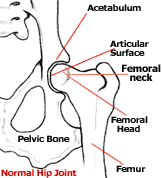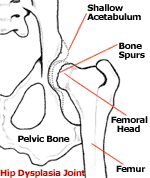Arthritis and obesity in older dogs.
[ad#Commission Junction – Pet Care Choice]
Question of the week
Dear YourOwnVet,
I have a ten year old female Labrador Retriever called Tessa. Tessa seems to be struggling a lot lately with getting up, especially in the mornings. Ever since she was spayed, Tessa gained a lot of weight which she hasn’t been able to lose. She has gained even more weight lately because has started to refuse to go out for her daily walk!! Is there anything I can do to help her? She weighs about forty five kilograms ( ninety nine pounds).
Sue Witton
Berkshire
United Kingdom
Dear Sue,
Tessa definitely sounds like she has a weight problem, which is not uncommon in this breed. The ideal weight for male Labradors is between 29 and 36 kilograms (65 and 80 pounds) and the ideal weight for female Labradors is between 24 and 31 kilograms (55 and 70 pounds.) (1) Labradors were bred to swim in the ocean, off the coast of Canada, and to help them cope with the extreme cold, they have a genetic tendency to develop a layer of subcutaneous fat, like a whale! But nowadays, they are one of the most popular dog breeds all over the world, especially in the United Kingdom. The tendency to develop this fat layer is no longer necessary but nevertheless still present. Labradors also have a voracious appetite – I have only ever seen one refuse food when it is very ill. These two tendencies mean that you have to watch your dog’s weight very carefully.
As your dog ages, she becomes less active and her joints slowly develop degenerative changes due to to wear and tear, known commonly as arthritis. Labradors also have a genetic tendency to develop arthritis, mostly commonly in the hindquarters due to a condition known as “Hip Dysplasia.” “Hip Dysplasia” is a problem when the head of the femur, or the leg bone, which is like a ball, doesn’t fit snugly in the socket it is supposed to, namely, the pelvis. There are varying degrees of Hip Dysplasia, the mildest being where there is a in-congruency in the joint to the worst case where the ball is not even lying in the socket. Hip Dysplasia is a combination of genetic, which your dogs inherits from her parents, and environmental factors such as the rate a young dog grows and how much exercise she gets. Reputable breeders all over the world are working hard to eliminate the genetic aspect of the problem by having their breeding dog’s hips X-rayed, graded and only breeding with those that show no Hip Dysplasia or very mild changes.
What this means for Tessa now is that there are potentially two problems that you need to deal with to get her happy and healthy again: One – you need to reduce her weight and two – you need to have her checked by her veterinarian for arthritis in a clinical consult and possibly by X raying her hips and other joints that are also arthritic. I would also advise having her weighed on a monthly basis to see that she loses weight.
First of all: The weight loss. Have a look at her food. Because she is ten years old, she may have been placed on a senior dog food. Now, not all senior dog foods are the same. Some of them actually have more calories in the food than the same brand of adult food, as those are geared towards geriatric patients that tend to lose a lot of body mass, especially around the age of 14 years and above. So it is important to feed the correct type of food in the first place. A senior dog of ten should be eating a food for mature active dogs. In Tessa’s case, however, I would recommend a diet food, such as the Hill’s R/D diet or the Eukanuba restricted calorie. You get dry and tinned forms and, if you stick to the amount they recommend on the packet, she will lose weight. Be careful to feed for weight loss, not for weight maintainence. These foods ensure a gradual weight loss over a few months, so don’t lose heart if she only loses 500g to 1 kilo a month. You also need to start getting her to exercise as her muscles will atrophy otherwise. If you have a doggy swimming facility near you, this would be ideal, as most Labradors love water, and swimming strengthens muscles without putting stress on joints. Otherwise only short walks daily, increasing in length and duration little by little. Start by going round the block only and eventually, you can walk her up to three kilometers daily as long as her arthritis is not too bad. Your vet will be able to tell you what she can do.
Secondly: If she has been seen by your vet and diagnosed with arthritis, then she should be put onto a joint supplement, such as Green Lipped Mussel Extract or Chondroitin and Glucosamine, to help repair the damaged cartilage and possibly also anti-inflammatories to manage inflammation in the joint. They help prevent arthritis worsening and also kill joint pain. Some foods already contain joint supplementation, such as the Hills J/D diet which would be perfect to maintain her on once she has lost the weight, as it caters for senior pets.
If you have a Retriever, I would steer clear of using “Rimadyl” or Carprofen as an anti inflammatory as there have been reports of liver problems specifically in this breed. In all other breeds, it is an excellent drug. Other sister drugs to “Rimadyl” have been developed, with Labadors in mind that are safer for the breed, for example “Previcox” (Firocoxib) and “Metacam” ( Meloxicam.) No anti inflammatory drug is without side effects and if your dog has nausea, loose stools or poor appetite on the drug, it is wise to discontinue its use and find an alternative. Anti-inflammatory drugs are roughly divided into 2 groups – COX 1 and COX 2. COX 1 drugs include all the older anti-inflammtories such as Aspirin, Paracetamol and Ibuprofen and the COX 2 drugs are the newer generation drugs such as Carprofen, Metacam and Firocoxib. COX 2 drugs are made to be easier on the stomach when used as chronic medication as opposed to the COX 1 drugs, which you can’t take for more than a few days.
References:
1. http://www.petuniversity.com/dogs/breeds/labrador-retrievers.htm
2. http://www.peteducation.com/article.cfm?c=2+2084&aid=444 hip pics








Leave a Reply
You must be logged in to post a comment.